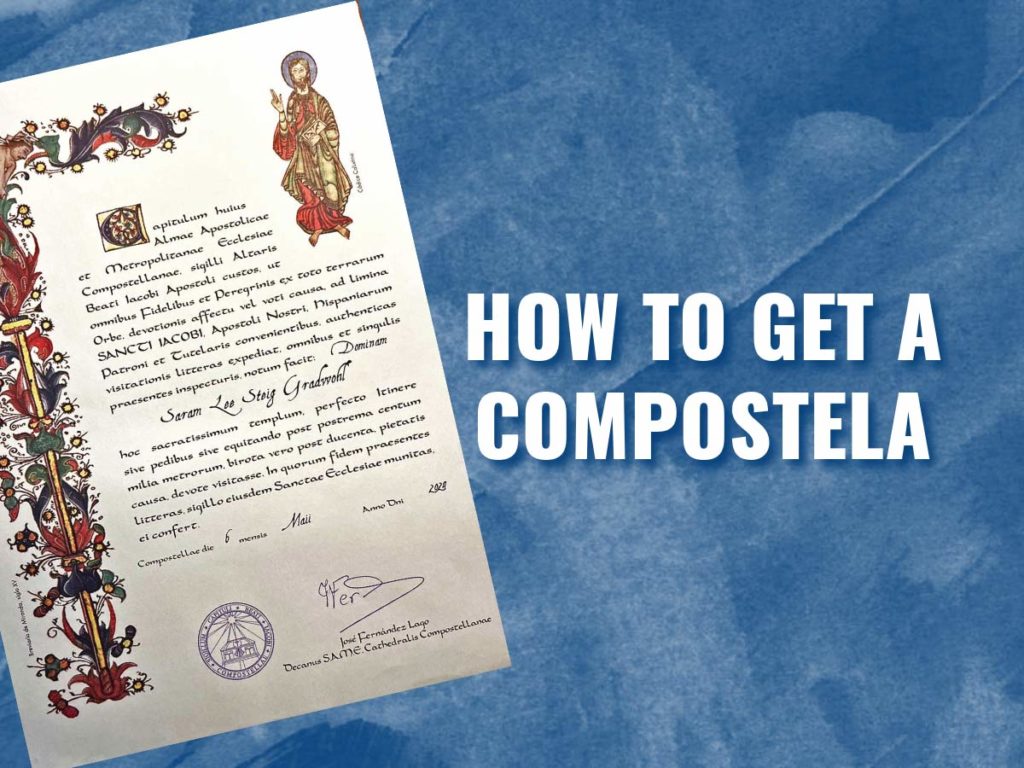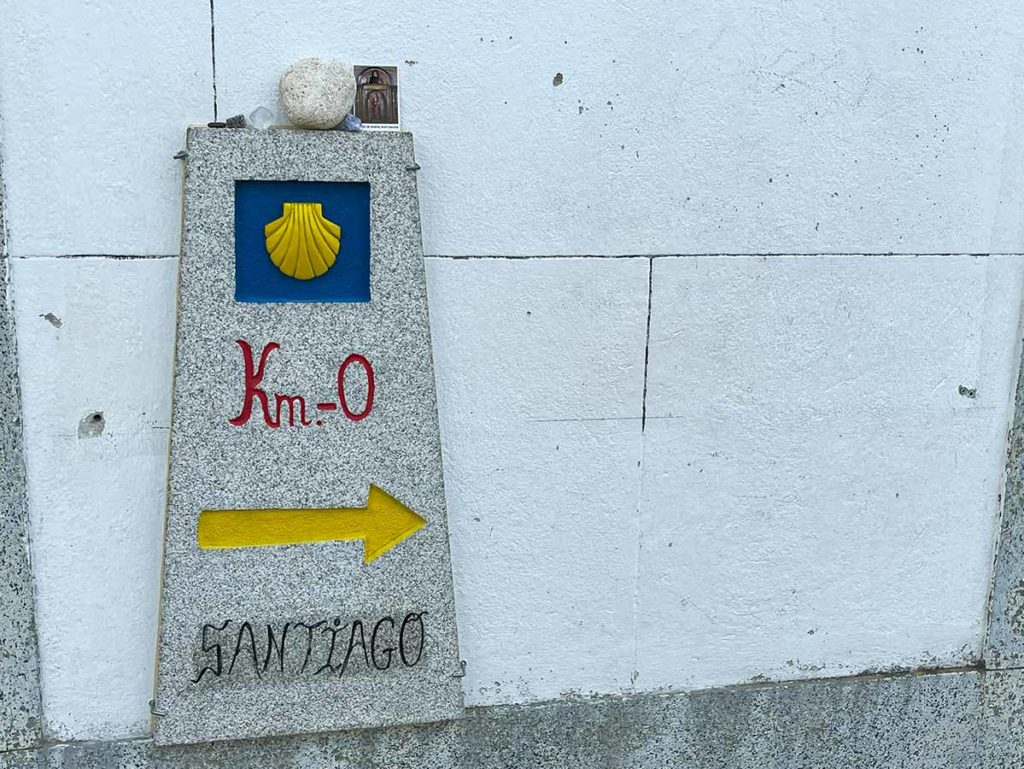How to Get Your Compostela in Santiago de Compostela
We’re excited for all pilgrims making their way to Santiago! Receiving a Compostela is an important rite of passage for many pilgrims. What is a Compostela? It’s a recognition from the Pilgrim’s Reception Office that you met the minimum requirements while walking, cycling or riding horseback. But, more importantly, it’s a symbol of your achievement and a reminder of all that you have poured into the effort of doing the Camino.
Whether you’re on the Way now or planning to go soon, this article serves as an FAQ for how to receive your Compostela in Santiago.

Qualifications for Receiving a Compostela Certificate
The requirements to qualify for a Compostela changed in 2025. For more information refer to Santiago de Compostela Pilgrim’s Reception Office.
Here’s our summary of the requirements for obtaining a Compostela:
- You must do at least 100 kilometers on foot or horseback, or 200 kilometers by bike
- …on the same route
- …which is an official route recognized by the Pilgrim’s Reception Office
- …and the final stage must be one that leads to the Santiago Cathedral
- You can do your Camino in stages, provided that they are in chronological and geographical order.
- You must collect sellos (stamps) along the way in your credential. For the 100/k minimum requirement, all pilgrims, regardless of starting point, need to collect at least two stamps per day, one at the beginning and one at the end of the stage.
- You must make the pilgrimage for religious or spiritual reasons.
You can request a credential from us for your pilgrimage.

How to Get Your Compostela in Santiago
The process is relatively easy. You must pre-register for your Compostela using the online form. You then go to the Pilgrim’s Reception Office and show them your credential(s). They may ask you some questions about your journey. After verifying that you qualify, they’ll print your Compostela. You can also purchase a distance certificate at this time.
You can find the online form here. There is also a QR code with the link located outside the Pilgrim’s Reception Office.
The Pilgrim’s Reception Office is located at Rúa Carretas, nº33 (accessed from García Sabell), map location here. If you’re standing with your back to the Cathedral in Plaza Obradoiro, just walk downhill past the Parador Hostal Real de Santiago on your right, and turn right on Rúa das Carretas.
The Pilgrim’s Reception Office is open daily 9am-7pm, except Dec. 25 and Jan. 1.

Once registered, here are the steps to follow:
- Enter the building of the Pilgrim’s Reception Office.
- Show your unique QR code on your phone to the security officer inside the door.
- Scan your QR code to get a small piece of paper with another QR code identifying your position in the queue.
- You can either stay in the waiting area until it’s your turn or you can leave and come back.
- If you do leave the Pilgrim’s Reception Office, watch the line numbers by scanning the QR code on the paper ticket. It’s recommended you return at least 30-50 numbers before yours so you don’t miss your turn. If you miss your turn, you’ll have to start the process over.
- Once your number is called, show your number to the person at the door and walk to the desk position indicated and obtain your Compostela and distance certificate (if desired).
- Compostelas are computer-generated (no longer hand-written) so the process goes quickly.
Remember, when it’s very busy there’s no guarantee you’ll be able to receive your Compostela right away. Consider pre-registering the day before and/or going to the office as early as possible in the morning. The Pilgrim Reception Office is staffed primarily by volunteers, so please be patient.

FAQ: Getting Your Compostela Certificate
When Are the Busiest/Least Busy Times at the Office?
This varies greatly, but it’s likely to be busiest in the early afternoon when many pilgrims arrive in Santiago. Early morning or the last 30 minutes before the office closes can be less crowded. If you aren’t attending Mass, you could try then.
Can You Get a Compostela If You Don’t Pre-Register and Just Show-Up?
No. You have to pre-register online. You can do it in advance—or while standing in front of the Pilgrim’s Reception Office. If you struggle to figure out how it works, a volunteer or another pilgrim at the office can usually help you.
If You Pre-Register, How Long Does the Process Usually Take?
You’ll receive a QR code/number, which is your “place” in line, and this will give you a general idea of your wait time. This varies quite a bit. But it can be pretty quick and you’ll probably not have to wait longer than 30 minutes.
Can You Collect a Compostela for Someone Else?
Generally not. Under rare circumstances you might be allowed to do this. Some people do claim a Compostela in memory of a deceased friend or relative. You might be able to add another person’s name to your Compostela (completed in honor of), but the office expects you to claim your Compostela for yourself and they’re pretty strict about it.
How Do I Get My Compostela Home?
You can purchase a small tube that will fit a rolled-up Compostela and distance certificate at the gift shop in the Pilgrim’s Reception Office, the post office, and many souvenir shops in Santiago. Expect to pay €2-3 for a tube.
What is a Distance Certificate?
In addition to the Compostela, the Pilgrim’s Reception Office offers a distance certificate, issued by the Chapter of the Cathedral of Santiago. It certifies the number of kilometers traveled along one of the officially recognized routes. It indicates the day and starting point of the pilgrimage, the kilometers traveled, the day of arrival and the route taken.

Your pilgrimage will live on long after you return home. If you’d like to keep it alive, we have some suggestions for things to do after your Camino.
Rev 07/10/2025

